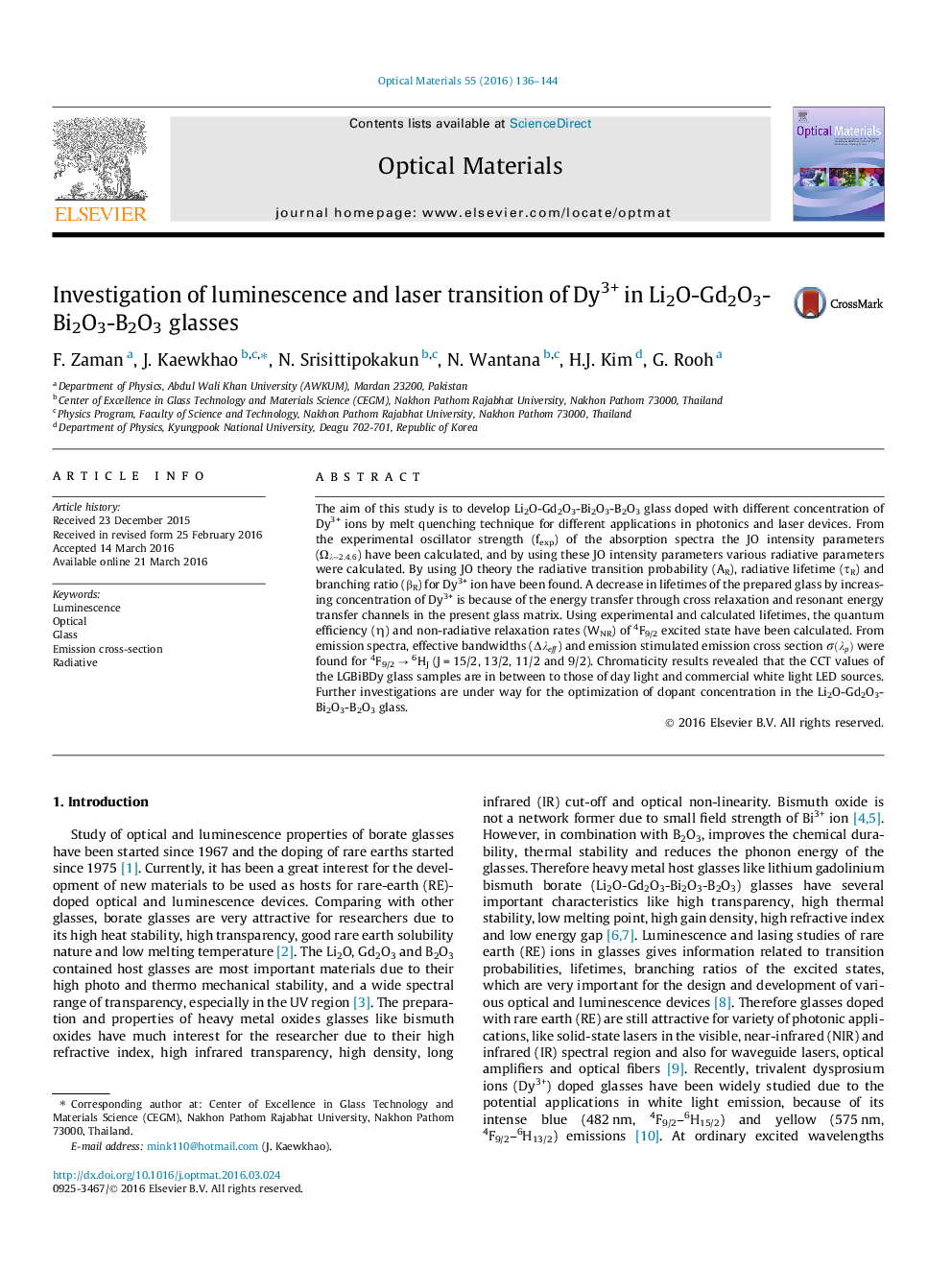| Article ID | Journal | Published Year | Pages | File Type |
|---|---|---|---|---|
| 1493344 | Optical Materials | 2016 | 9 Pages |
•Spectroscopic properties of Dy3+ ion in Li2O-Gd2O3-Bi2O3-B2O3 were studied.•JO analysis was used to analyze spectroscopic properties.•White emission was observed from glass sample.•Lasing properties were characterized.
The aim of this study is to develop Li2O-Gd2O3-Bi2O3-B2O3 glass doped with different concentration of Dy3+ ions by melt quenching technique for different applications in photonics and laser devices. From the experimental oscillator strength (fexp) of the absorption spectra the JO intensity parameters (Ωλ=2,4,6Ωλ=2,4,6) have been calculated, and by using these JO intensity parameters various radiative parameters were calculated. By using JO theory the radiative transition probability (AR), radiative lifetime (τR) and branching ratio (βR) for Dy3+ ion have been found. A decrease in lifetimes of the prepared glass by increasing concentration of Dy3+ is because of the energy transfer through cross relaxation and resonant energy transfer channels in the present glass matrix. Using experimental and calculated lifetimes, the quantum efficiency (η) and non-radiative relaxation rates (WNR) of 4F9/2 excited state have been calculated. From emission spectra, effective bandwidths (ΔλeffΔλeff) and emission stimulated emission cross section σ(λp)σ(λp) were found for 4F9/2 → 6HJ (J = 15/2, 13/2, 11/2 and 9/2). Chromaticity results revealed that the CCT values of the LGBiBDy glass samples are in between to those of day light and commercial white light LED sources. Further investigations are under way for the optimization of dopant concentration in the Li2O-Gd2O3-Bi2O3-B2O3 glass.
